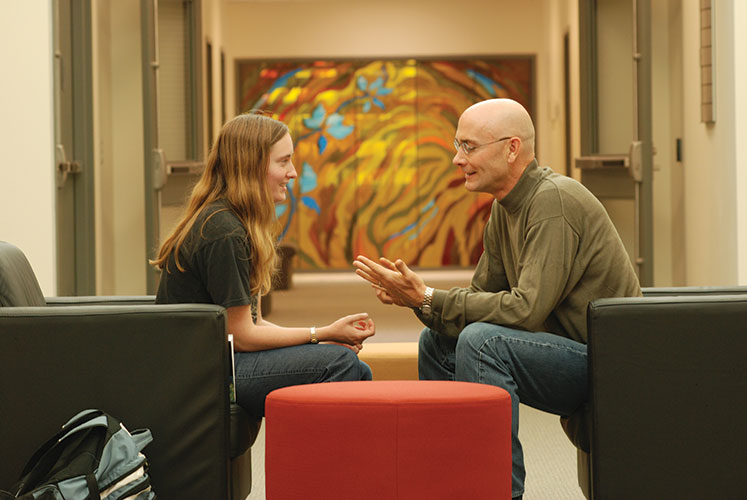Poverty in Canada
The Canadian Poverty Institute understands poverty to be multi-dimensional involving material, social and spiritual poverty.
Material poverty exists where people lack the material and financial resources to thrive.
Social poverty exists where people are isolated and lack the formal and informal supports necessary for resilience.
Spiritual poverty exists where people lack meaning and purpose in their lives.
A Few Facts
Considering Canada's wealth and resources, a disproportionate number of Canadians are living in poverty. In 2021, 7.3% of the Canadian population was living in poverty, a total of 2,717,615 persons. This included 621,235 persons in deep poverty (1.7% of the population) and 2,096,390 who were living in shallow poverty (5.7% of the population). In addition, 6.9% of the Canadian population was living in households with incomes just above the poverty line, a total of 2,556,880 persons. Combined, a total of 5,274,505 Canadians were living either in or at risk of poverty, accounting for 14.3% of the total population. For a detailed analysis view our report The Risk and Depth of Poverty in Canada.
In 2021, 8% of children (0-14) and 10.8% of youth (15-24) were living in poverty. At the same time, seniors reported the lowest poverty rate, with only 4.2% living in poverty.
Lone-parent families are significantly poorer than all other household types in Canada. In 2021, 13% of children living in lone-parent families were in poverty compared to just 4% of children living in two-parent families.
Recent immigrants experience significantly higher poverty rates than Canadian-born persons. In 2021, 14% of immigrants who had arrived within the previous 10 years were living in poverty, compared to just 6% among persons born in Canada. Meanwhile, non-permanent residents had the highest poverty rate, with roughly one-third (34%) living below the poverty line.
Racialized communities face high levels of poverty. In 2021, the poverty rate for racialized persons was 11% – almost double the rate of non-racialized persons (6%).
Close to 15% of people with disabilities are living in poverty, 59% of whom are women.
Indigenous peoples in Canada continue to experience elevated levels of poverty. In 2021, 9% of persons of Indigenous identity were reported to be living in poverty compared to 7% of non-indigenous persons.
For an overview of poverty in Canada, listen to the podcast “Why Haven’t We Ended Poverty Yet?” produced by Statistics Canada..
For a comprehensive online library of information and resources about poverty in Canada, visit the Canadian Poverty Hub.
reports about poverty in canada
There are many good reports and resources from federal, provincial and civil society partners that provide a picture of poverty in Canada and recommendations to address it. Listed below are a few key recommended resources.
National Status Reports
Federal Policy Reports and Initiatives
Opportunity for All: Canada’s First Poverty Reduction Plan
Employment and Social Development Canada (2018)
In From the Margins: A Call to Action on Poverty, Housing and Homelessness
The Standing Committee on Social Affairs, Science and Technology, Report of the Subcommittee on Cities. (2009)
Provincial Reports and Initiatives
Newfoundland and Labrador
Reducing Poverty: An Action Plan for Newfoundland and Labrador
Prince Edward Island
Social Action Plan to Reduce Poverty
Nova Scotia
Preventing Poverty. Promoting Prosperity. Nova Scotia's Poverty Reduction Strategy
New Brunswick
Overcoming Poverty Together. The New Brunswick Economic and Social Inclusion Plan
Quebec
The Will to Act. The Strength to Succeed. National Strategy to Combat Poverty and Social Exclusion
Ontario
Building a Strong Foundation for Success: Reducing Poverty in Ontario
Manitoba
All Aboard: Manitoba's Poverty Reduction and Social Inclusion Strategy
Saskatchewan
Taking Action on Poverty. The Saskatchewan Poverty Reduction Inclusion Strategy
Alberta
Together We Raise Tomorrow: An Alberta Approach to Early Childhood Development
Poverty Costs
British Columbia
Together BC: British Columbia’s Poverty Reduction Strategy
Additional Resources
Civil Society Initiatives
Human Rights and Poverty Reduction Strategies: A Guide to International Human Rights Law and its Domestic Application in Poverty Reduction Strategies
Faith Resources
Eyes to See: Reflecting God’s Love to a World In Need.
An Ecumenical Resource and Workshop Guide Produced by Compassion Canada.
Living Justice: A Gospel Response to Poverty
An Ecumenical Worship and Action Guide on Poverty and Justice in Canada.
A Publication of Citizens for Public Justice (2011)
Justice for the Poor
Video and Group Discussion Guide.
A Publication of Sojourners. (2010)




